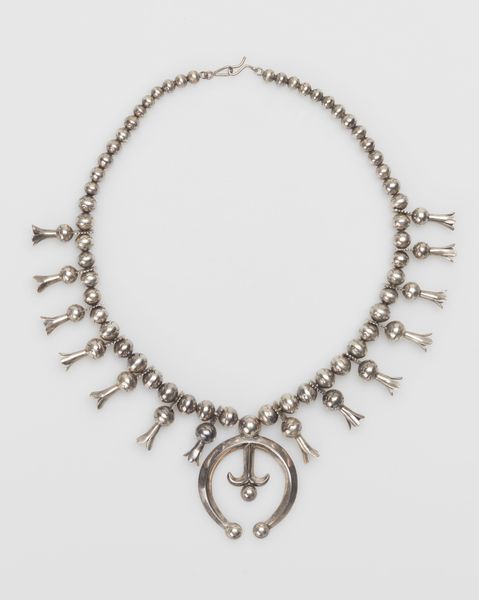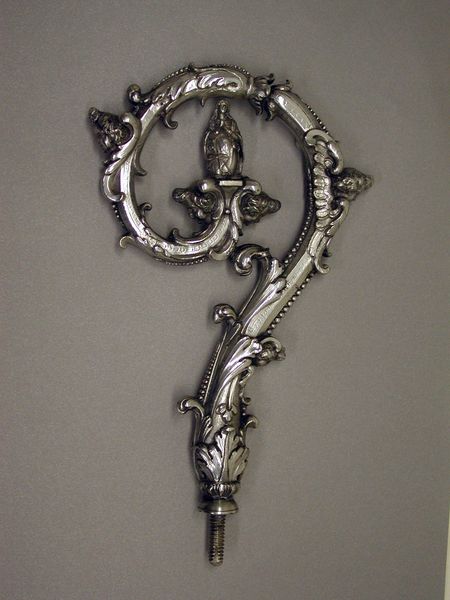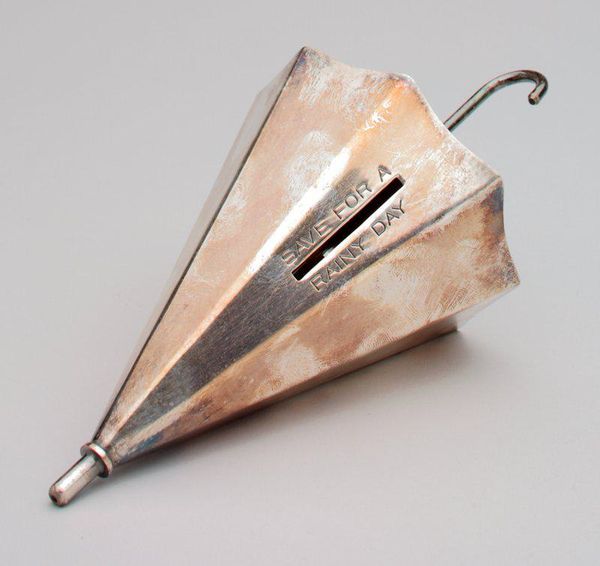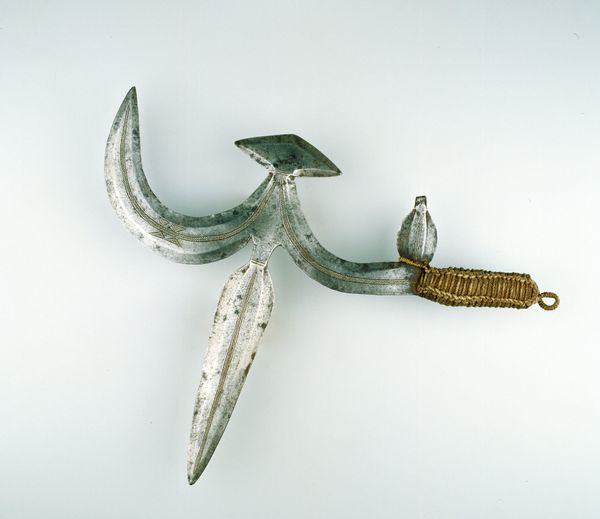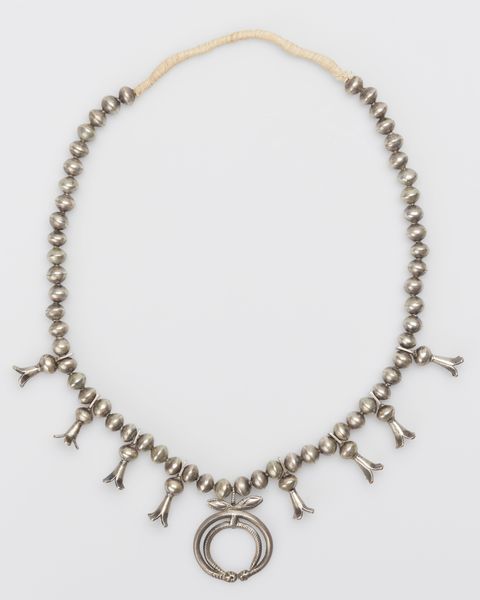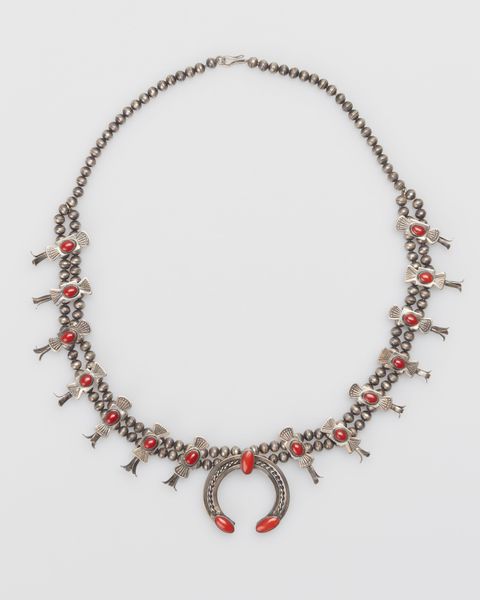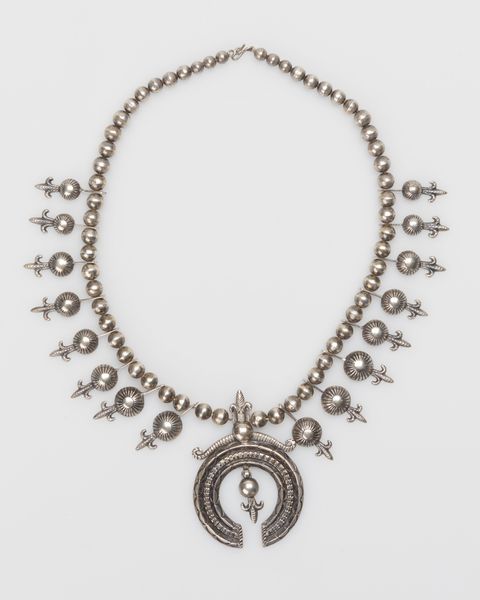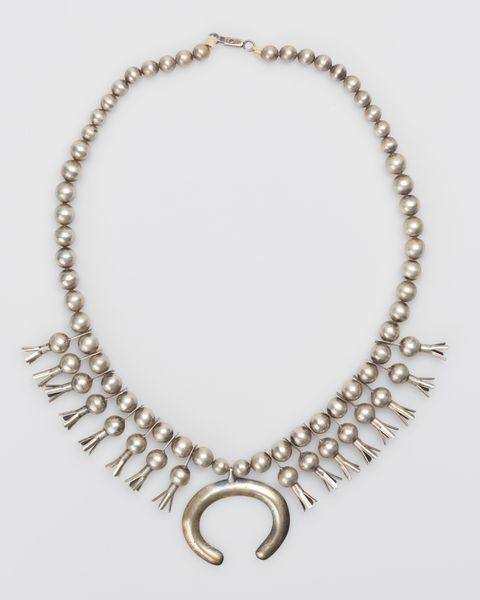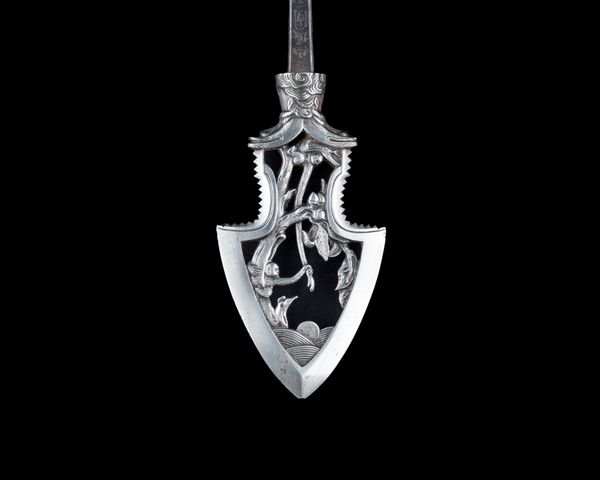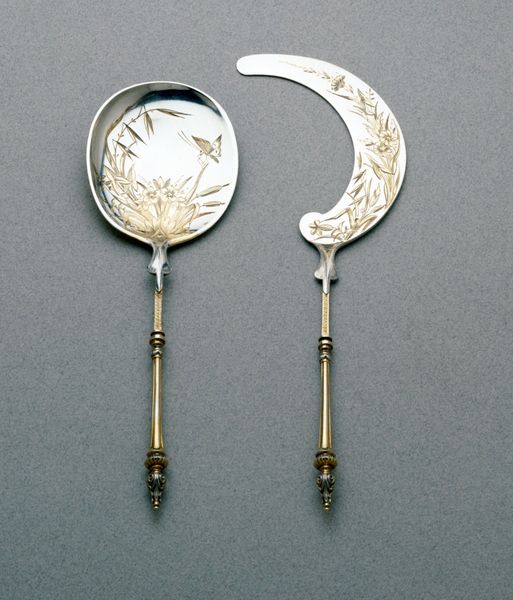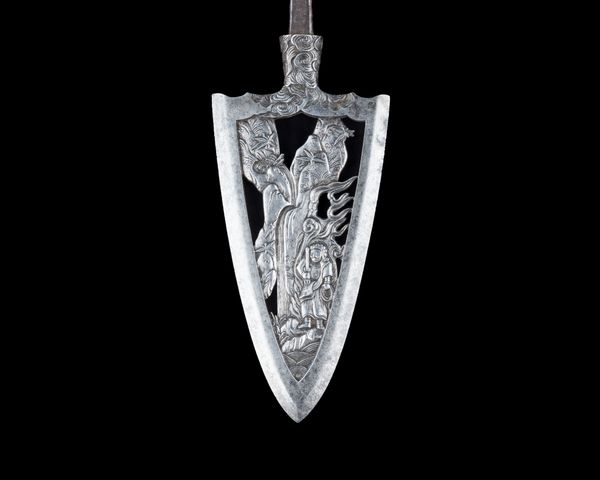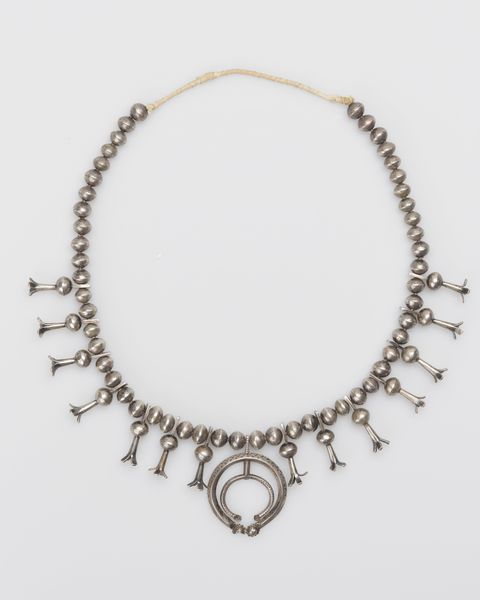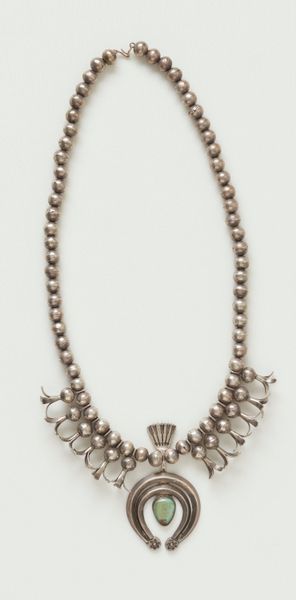
mixed-media, metal, sculpture
#
portrait
#
mixed-media
#
metal
#
jewelry design
#
sculpture
#
decorative-art
Dimensions: 11-13/16 x 7-9/16 x 1-1/4 in. (30.0 x 19.2 x 3.2 cm)
Copyright: Public Domain
Curator: Welcome. Here we have a captivating necklace with a half-moon pendant. It’s believed to originate around the 20th century, and is currently housed here at the Minneapolis Institute of Art. Editor: There’s something instantly dreamlike about this piece. That pearlescent moon, reflecting light... It feels ancient and futuristic simultaneously, almost like something from a shaman’s travel bag on a starship! Curator: Indeed. Its allure is complex. Let’s begin by acknowledging its mixed-media construction. We see evidence of metalwork, inlays, and decorative beading which speaks to both resourcefulness and perhaps, even some ritual or ceremonial intent. Editor: Those little beads draw me in—like counting rosary beads, focusing the mind. And the contrast between the light, reflective moon and the dark bird symbol...it sets my mind racing with questions about protection, journeys, transformation. Do you get that vibe at all? Curator: Most definitely. Focusing on its design as jewelry also redirects us toward adornment as a practice within material culture. Who made this piece, and under what conditions were they working? These considerations are key. Editor: Exactly! Imagine crafting this – shaping the moon pendant so precisely, painstakingly placing each tiny bead. And I feel so drawn to imagine what that central emblem symbolizes – freedom? A specific guardian spirit? I want to invent stories for this! Curator: The skill and craft involved are clear testaments to an individual artist's commitment to excellence in the field, yet further probing will be required to determine a detailed provenance. Editor: Still, in its current state, it is such a resonant object. Its silent glow evokes wonder. Just look at it and see. A captivating dance between light, shadow, material, and meaning that somehow resonates down through the ages, don't you agree? Curator: Yes. An object of both beauty, skilled making and, I think, much deeper symbolic purpose that connects us to our very recent past, whilst holding unanswered, tantalising clues.
Comments
minneapolisinstituteofart about 2 years ago
⋮
This shell pendant is a beautiful example of the unique blend of both Polynesian and Melanesian cultural elements found in the Santa Cruz Islands. The ornament is made of golden-lipped pearlshell, a rare material available only through trade with neighboring islands. The object's form also reflects outside cultural influences. Most pendants worn in the Solomon Islands are round, but use of the crescent shape originated in central Polynesia, and spread to the Santa Cruz Islands through trade with Polynesian whaling crews in the early 19th century. The tortoiseshell ornament on the front of the pendant represents a frigate bird, a sacred animal. These birds were honored for their skills at fishing, and were seen as powerful hunters; attributes admired by men from this area. Body ornaments such as this one were highly valued. Each household had a collection of them, much of it handed down, which made up a significant portion of that family's wealth. Most of these prestigious items were worn by men, generally on ceremonial occasions.
Join the conversation
Join millions of artists and users on Artera today and experience the ultimate creative platform.
